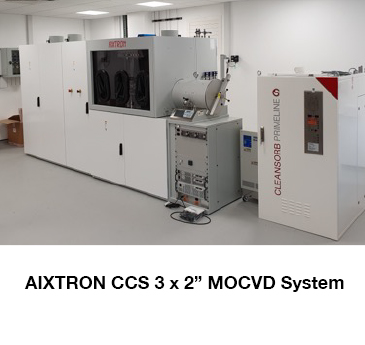(Metalorganic Chemical Vapour Deposition)
Centre Overview: the Oxide and Chalcogenide MOCVD Centre is located in the new Centre for Integrative Semiconductor Materials Building on the Swansea Bay Campus. As an underpinning materials system, oxide and chalcogenide semiconductors can play a major part in key UK investment priorities by filling a critical gap in capability and address the EPSRC strategic priority for new “21st Century Products” where these semiconductor properties are captured in new smart products.



